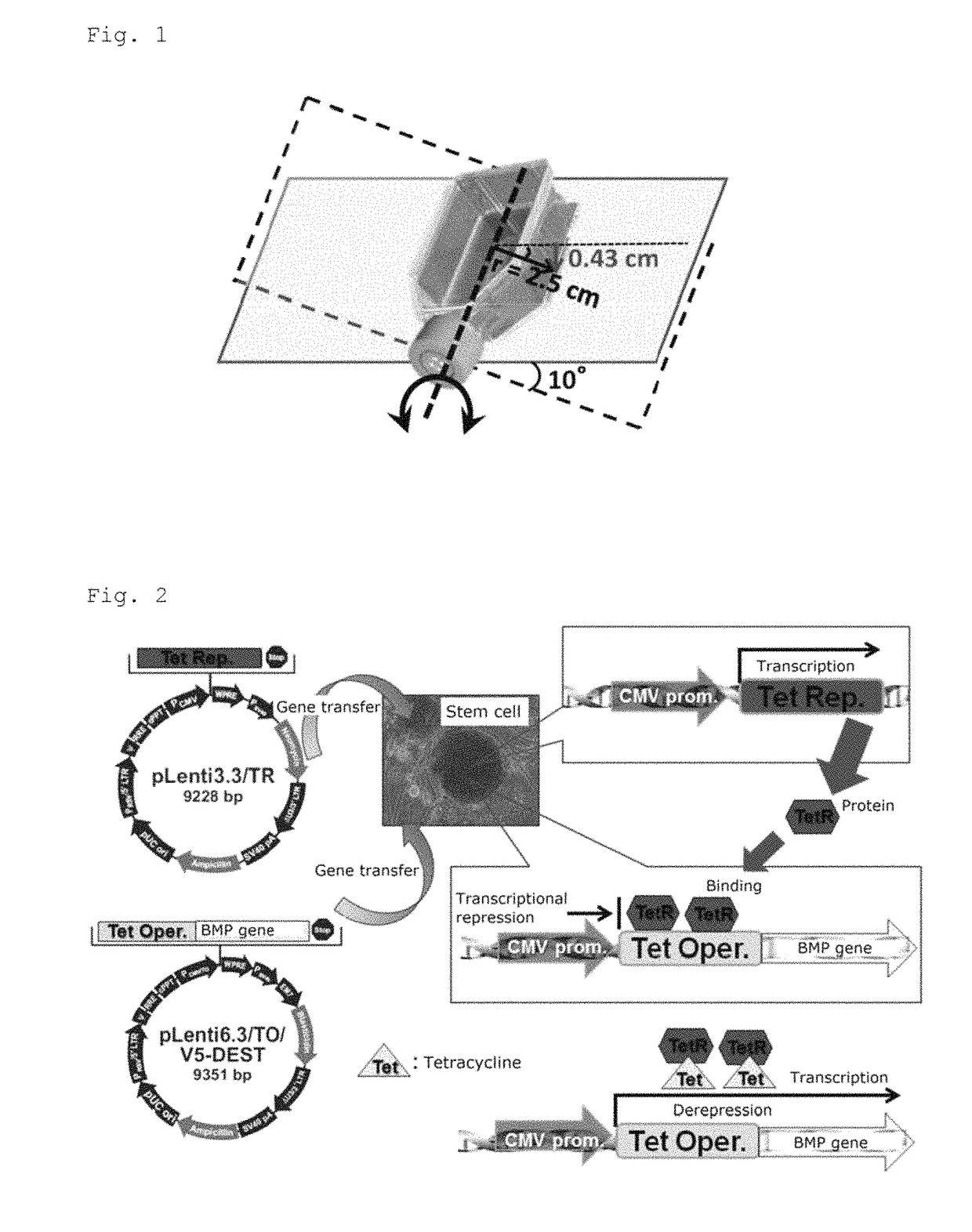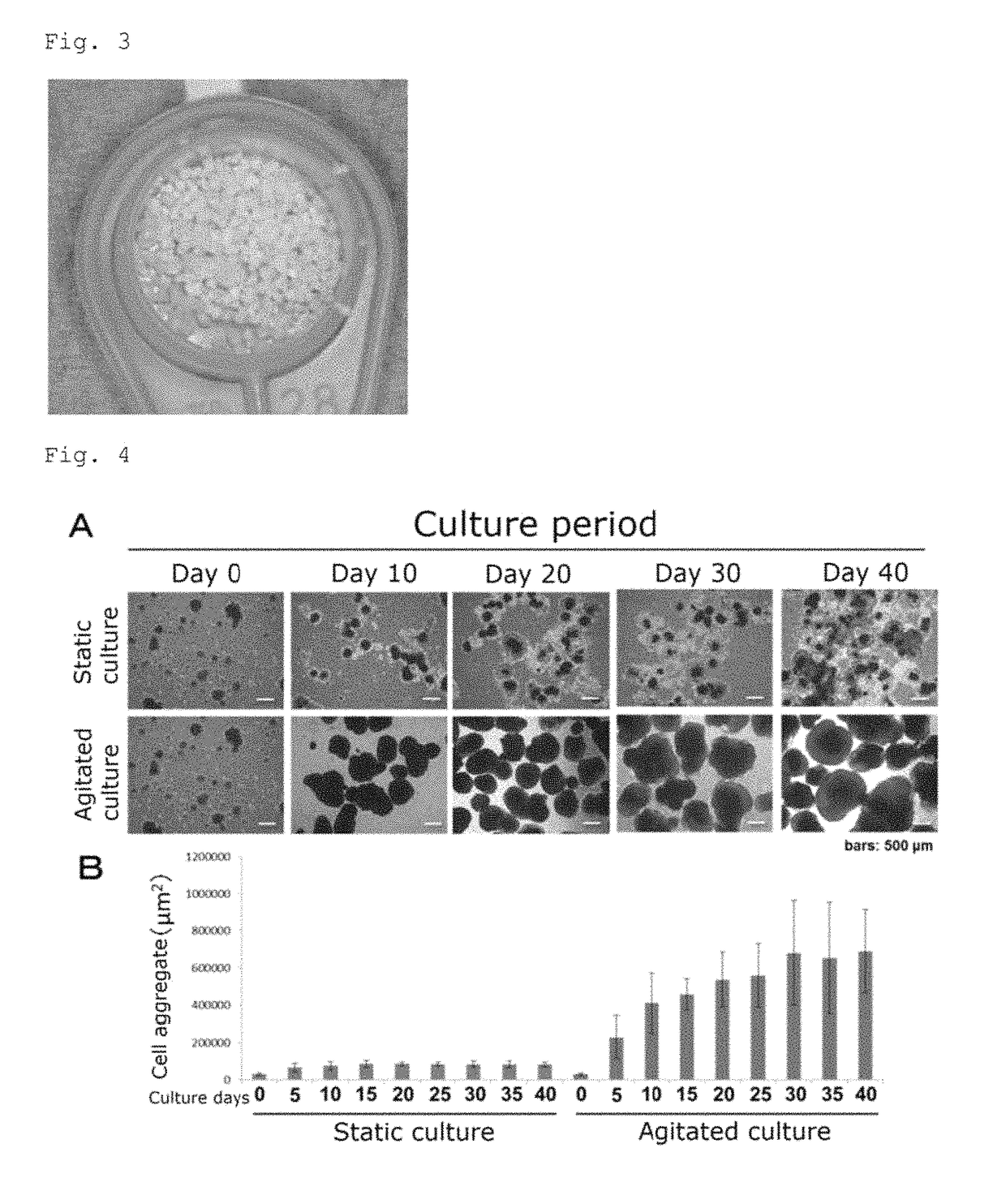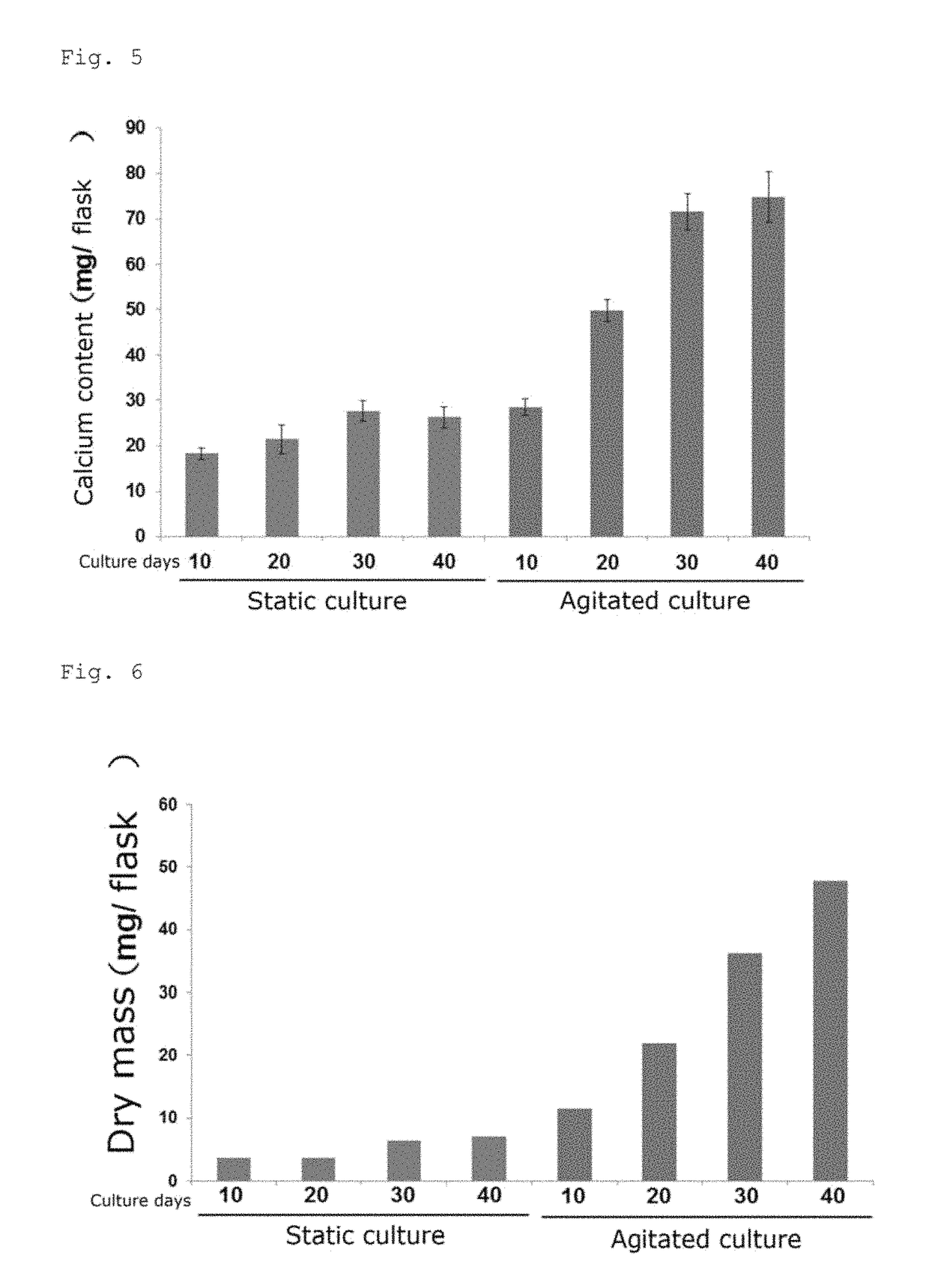Bone regeneration agent
a bone regeneration agent and bone technology, applied in the field of bone regeneration agents, can solve the problems of bone morphology after healing, inferior biomaterials to autologous bones in osteoinductive activity, and problems in the direction of bone strength and implant-bone integration (osseointegration) during and/or after healing, and achieves the effects of favorable osseointegration, easy production, and low cos
- Summary
- Abstract
- Description
- Claims
- Application Information
AI Technical Summary
Benefits of technology
Problems solved by technology
Method used
Image
Examples
example 1
1. Mouse iPS Cells
[0125]An iPS cell line established by introducing the genes of Oct3 / 4, Sox2 and Klf4 to adult mouse gingival fibroblasts using a retroviral vector (PLoS ONE, 5 (9): e12743, 2010) was used in the following experiment. The iPS cells were maintained and cultured on SNLP76.7-4 feeder cells (mitomycin-C treated: 2.1×105 cells / well) seeded on a 6-well tissue culture plate (coated with 0.1% gelatin) in an ES medium [a DMEM medium (Nacalai Tesque) supplemented by 15% fetal bovine serum (Invitrogen), 2 mM L-glutamine (Invitrogen), 1×10−4 M non-essential amino acid (Invitrogen), 1×10−4 M 2-mercaptoethanol (Invitrogen), 50 U penicillin and 50 μg / mL streptomycin (Invitrogen)].
2. Generation of Embryoid Bodies from iPS Cells
[0126]After grown to 80% confluence, the iPS cells on the 6-well tissue culture plate were treated with 0.25% trypsin / l mM EDTA (550 μL, room temperature, 1 to 3 minutes) and entirely collected. The collected cells were transferred to a 10-cm low-attachment c...
examples 2 to 4
[0131]A bone regeneration agent was obtained in the same manner as described in Example 1, except that the period of the agitated culture was 10, 20 or 40 days.
experimental example 1
[0132]Differentiation culture was performed in the same manner as described in Examples 1 to 4, and the resulting cell aggregates were photographed under phase-contrast microscopy at 5-day intervals for 40 days. For a control group (control), the same procedure as in Examples 1 to 4 was performed except that static culture was performed for induced differentiation instead of agitated culture, and the resulting cell aggregates were photographed as described above. A partial section of each photographed image is shown in FIG. 4A. The total area of ten randomly selected cell aggregates on each photographed image was measured with the image-analysis software ImageJ (National Institutes of Health, U.S.) and the mean and the standard deviation were calculated. The results are shown in FIG. 4B.
[0133]The area per cell aggregate derived from iPS cells in the case of agitated culture increased over time and reached the plateau after 30 days. The area after 30 days of agitated culture was abou...
PUM
| Property | Measurement | Unit |
|---|---|---|
| frequency | aaaaa | aaaaa |
| diameter | aaaaa | aaaaa |
| time | aaaaa | aaaaa |
Abstract
Description
Claims
Application Information
 Login to View More
Login to View More - R&D
- Intellectual Property
- Life Sciences
- Materials
- Tech Scout
- Unparalleled Data Quality
- Higher Quality Content
- 60% Fewer Hallucinations
Browse by: Latest US Patents, China's latest patents, Technical Efficacy Thesaurus, Application Domain, Technology Topic, Popular Technical Reports.
© 2025 PatSnap. All rights reserved.Legal|Privacy policy|Modern Slavery Act Transparency Statement|Sitemap|About US| Contact US: help@patsnap.com



